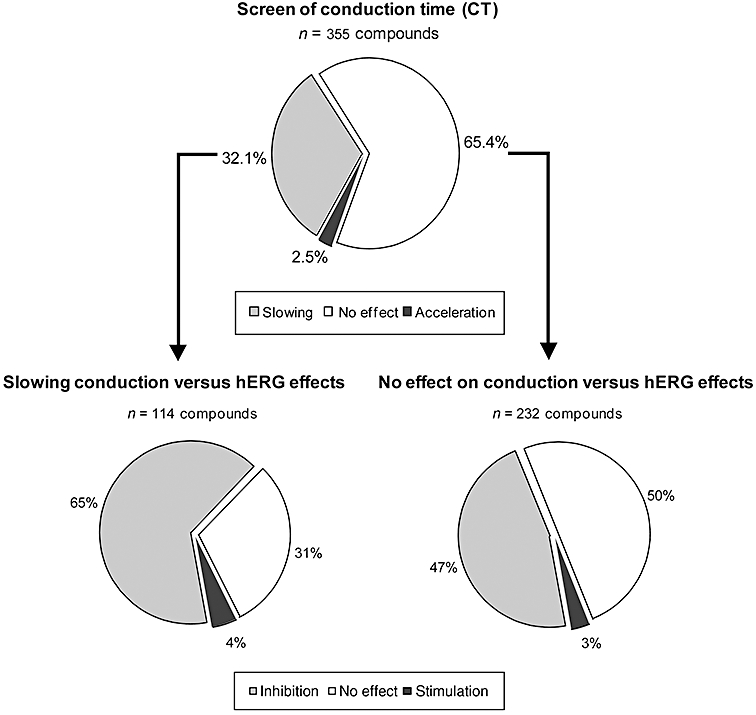Figure 1.

Upper part: effect of 355 compounds on the CT. Slowing of conduction was defined as a reduction of Vmax or an increase in intraventricular CT by ≥15% (net effect), or an increase in the QRS duration by ≥10% (net effect) by a compound in rabbit isolated Purkinje fibres, in isolated Langendorff-perfused hearts or in isolated left ventricular, arterially perfused, wedge preparations at any tested concentration (n= 5–7). Acceleration of conduction was defined as an increase in Vmax or a reduction of CT by ≥15% (net effect) or a shortening of QRS duration by ≥10% (net effect) in the Purkinje fibre, in Langendorff-perfused hearts or in the wedge preparations, at any tested concentration. The compound was considered as having no effect if it induced a change from baseline in Vmax or in the intraventricular CT between −15 and +15%, or a change from baseline in QRS duration between −10 and +10%. Lower part: effect of 114 compounds, which slowed conduction (left), and 232 compounds, having no effect on conduction, on the hERG current. Inhibition: ≥20% inhibition of hERG current at a concentration ≤3 µM; no effect: <20% inhibition or <10% activation of hERG current at a concentration ≤3 µM or effects appeared only at high concentrations (>3 µM); hERG stimulation (activation): ≥10% activation of hERG at a concentration ≤3 µM (n= 3–5 per concentration).
